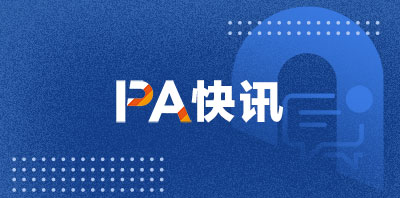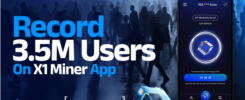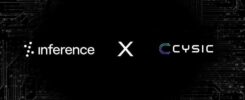1. Analysis of important projects in the DePIN track
1. DoubleZero — Building a web3 highway based on Solana
On March 10, when the overall crypto market was weak, another DePIN dark horse project, DoubleZero Foundation, received a huge investment of US$28 million from a top VC.
Who exactly is DoubleZero Foundation, and why was it able to obtain such a large investment when the overall market was sluggish?
I summarize the key points as follows:
(1) The founding team has extensive experience in blockchain projects and has been successful. In addition, the founders have many resources in the industry and have luxurious ecological resources.
Austin Federa, the founder of DoubleZero, was previously the Head of Strategy of the Solana Foundation. He can be said to be one of the important driving forces behind the early rise of the Solana ecosystem. During his time at the Solana Foundation, he was not only responsible for global market strategy, but also directly participated in the implementation of multiple key projects, such as promoting the integration of USDC and USDT on Solana, and was even deeply involved in the ecological cooperation in the FTX era.
At the same time, Austin Federa has a deep relationship with the Solana core team (including Anatoly Yakovenko and Raj Gokal). It is this relationship that enabled Double Zero to obtain resource support and market recognition from the Solana ecosystem in the early stages.
(2) The investment team is luxurious. Solana’s founders jointly invest and clearly support Solana’s DePIN strategic layout.
The picture below shows the DoubleZero investor team. If you are familiar with the investment landscape in the crypto world, you will know the influence of Dragonfly and Multicoin. They are not only long-term supporters of the Solana ecosystem, but also play an important role in many key projects (such as Multicoin’s early bet on Solana and Dragonfly’s participation in Serum).
In addition to the top VCs, financial forces within the Solan ecosystem also played a core role in this round of financing. Anatoly Yakovenko and Raj Gokal, co-founders of Solana Ventures and Solana Labs, also participated as angel investors.
From a certain irrational perspective, this is almost equivalent to announcing to others that this is my biological son.
It should be noted that DoubleZero’s investment is the first project that Mingpai invested in after the Solana Foundation just announced the DePIN ecological strategy.
Therefore, we believe that Solana’s official support is not a one-man show, but a comprehensive tilt of funds, technology, and market resources. For the entire DePIN track, this is undoubtedly an important signal: Solana ecology is actively laying out the physical infrastructure network, and Double Zero may be the “vanguard” leading the charge.
(3) Leading technical solutions, building a highway for the web3 track, making web3 projects as smooth as web2;
We know that the Web3 track is facing many problems now. Among them, at the infrastructure layer, due to problems such as public Internet bandwidth limitations and non-deterministic routing, Web3 projects are often not as smooth as Web2; and even if the public bandwidth limitations and non-deterministic routing problems are solved, if the delay problem between validators cannot be solved, then the Web3 project will still not be as smooth as Web2.
DoubleZero was created to solve the current infrastructure layer problems of web3.
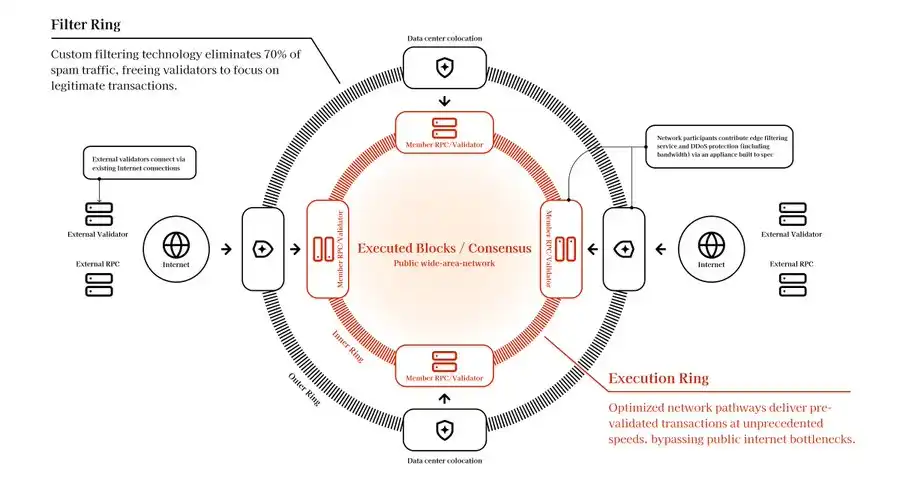
From the architecture in the figure above, we can see DoubleZero’s unique Two-Ring Architecture. The Outer Ring connects to the public Internet and uses hardware (such as FPGA) for attack protection, signature verification, and transaction filtering. The Inner Ring processes the filtered traffic through a dedicated bandwidth line and builds consensus.
First, the outer ring connects to the public Internet and uses hardware (such as FPGA) for attack protection, signature verification, and transaction filtering;
The benefit is that by pre-filtering incoming junk and duplicate transactions through dedicated hardware, the burden on validators can be reduced, allowing the blockchain to share filtering resources without the need for each validator to provide them individually.
Secondly, the Inner Ring processes these filtered traffic through dedicated bandwidth lines and builds consensus, because it can improve communication efficiency through clear message routing, tracking and priority management.
Regarding the specific technical processing flow, the official information disclosed is as follows:
(1) As the first line of defense, Outer Ring is mainly responsible for filtering invalid traffic such as spam transactions, DDoS attacks, and malicious contract calls. It uses an adaptive traffic filtering mechanism, machine learning, and heuristic rules to analyze transaction patterns in real time, accurately identify and intercept malicious traffic, and ensure that only valid transactions can enter the blockchain mainnet.
At the same time, the Outer Ring also relies on decentralized zero-permission fiber contributions, and independent contributors in the network provide physical infrastructure to further ensure the authenticity and priority of data packets. All transactions must undergo basic validity screening in the Outer Ring before entering the Inner Ring, reducing invalid transactions from entering the core network and improving overall processing efficiency.
(2) Transactions entering the Inner Ring are strictly screened, so it can focus on efficient transaction processing. The Inner Ring uses a high-performance architecture similar to Solana, supports ultra-high TPS (transactions per second), ensures extremely short transaction confirmation times, and can cope with the needs of large-scale transactions.
In order to further improve the smoothness of the network, Double Zero also adopts a stateless verification mode. This lightweight transaction processing method makes the entire network run more smoothly and efficiently compared to the state storage mode of traditional blockchains.
2. Roam — Web3 version of Starlink built on Solana
On March 6, Roam, another decentralized wireless network project built on the Solana public chain, was launched on Kucoin and Bybit, with a market value of more than 60 million US dollars. Solana has added another powerful player to the DePIN track.
(1) What is Roam?
ROAM is a decentralized wireless network project based on the Solana blockchain, which aims to provide seamless and secure WiFi and eSIM connections around the world , and aims to build a global open wireless network. It uses blockchain technology to achieve automatic network switching and secure connections, supporting individuals, smart devices, and AI agents.
It currently has more than 2.3 million users and 2 million WiFi nodes, covering more than 190 countries, and ranks among the top in the DePIN field.
The total supply of the $ROAM token is 1 billion, 600 million of which are used for mining and community activities. Users can earn tokens by providing WiFi or verifying the network.
According to the Messari 2024 report, ROAM ranks fourth among DePIN projects with more than 1 million active nodes and ranks first in the number of hardware nodes. Competitors include Helium and DIMO, but ROAM’s global coverage and user scale give it an advantage.
If Musk’s Starlink has built a communication system based on outer space, I would like to call Roam a web3 version of the Starlink system based on the ground communication network.
(2) Technological advantages
ROAM leverages OpenRoaming™ WiFi and eSIM technology, allowing users to provide WiFi access or share network performance data. At the same time, ROAM uses decentralized identity (DID) and verifiable credentials (VC) to ensure that there is no risk of data leakage when users share and use WiFi, ensuring privacy and security.
The specific technical architecture and functions are as follows:
-
OpenRoaming™ Wi-Fi: Complies with the Wireless Broadband Alliance (WBA) standard and allows users to seamlessly switch between different WiFi networks to ensure continuous connectivity.
-
eSIM Services: Available in more than 160 countries, the smart eSIM service allows users to access data networks without a traditional SIM card.
-
Blockchain incentive mechanism: Using the Proof-of-Service mining algorithm, users earn ROAM tokens by providing WiFi services or verifying network performance.
-
Decentralized Identity (DID) and Verifiable Credentials (VC): Use blockchain technology to protect user privacy, eliminate reliance on centralized validators, and improve security and decentralization.
In this system design, OpenRoaming™ Wi-Fi solves the link protocol issues of communication systems in different countries and regions. eSIM solves the problem of no SIM services in many areas and can help create communication conditions in some poor areas. DID and VC technologies solve data security and privacy issues in the communication process. The introduction of the web3 economic system can quickly stimulate early network construction issues.
The reason why ROAM has been able to grow rapidly since its revision in 24 years and become a leading player in the DePIN track is not only due to the siphon effect of the Solana ecosystem, but also due to its own accumulation in technology and track.
(3) Operational advantages
The project team has been deeply involved in the web3 track for many years and is well versed in the web3 project strategy. Through web3’s idle, sharing incentive and other models, it has quickly accumulated network effects and initial users.
ROAM encourages users to participate in network construction through mobile applications, such as adding WiFi nodes, daily check-ins or inviting friends, to earn Roam Points, which can be exchanged for ROAM tokens after the Token Generation Event (TGE).
From the project team’s information, we can see that although the ROAM project started on April 2, 2024, its previous project name was MetaBlox. We found from the information that MetaBlox was first established in 2018. After years of silence, it did not really come out until 2024, when MetaBlox was rebranded as ROAM and migrated to the Solana mainnet. From this point, we can see that the success of any project is the result of years of deep cultivation in this track, so even if the market is currently in a downturn, I believe that good projects can still cross the cycle of time and bloom the rose of time.
To sum up, ROAM provides a good wireless network sharing project and has formed a good network effect. The current market value is only about 15 million US dollars, which is far from Grass’s 360 million US dollars. If we can see more users participating in the ROAM network in the future, we may be able to see the project take off and rise in the next bull market .
2. Ecological Observation
As of March 14, 2025, we have observed that the DePIN ecosystem based on Solana has developed significantly, with a market value of more than 25 billion US dollars, which is much higher than the scale of DePIN projects in other ecosystems. We are seeing a DePIN empire ecosystem being nurtured on Solana .
According to public data, there are about 78 DePIN projects on Solana (data refer to statistics from platforms such as Messari and DePIN Scan as of 2024), covering wireless communications (such as Helium), computing resources (such as Render Network), geolocation (such as Hivemapper), cloud storage (such as GenesysGo SHDWDrive), etc. Solana’s high throughput (theoretically up to 50,000 TPS), low transaction costs (about $0.00025 per transaction) and mature developer ecosystem make it the preferred platform for DePIN projects.
Currently, the representative DePIN projects on Solana include:
-
Helium: The world’s largest decentralized wireless network, after migrating to Solana, has deployed nearly 1 million hotspots, covering 192 countries, providing IoT and 5G services.
-
Render Network: A decentralized GPU computing platform that has migrated from Ethereum to Solana. It has processed tens of millions of frames of image data and supports AI and media rendering.
-
Hivemapper: A decentralized digital map network that challenges Google Maps through user-contributed dashcam data and has covered multiple cities.
-
GenesysGo SHDWDrive: A decentralized cloud storage solution that attempts to fill the gap in the storage field of the Solana ecosystem.
-
Dabba Network (Emerging Project): Focuses on the Indian broadband market and improves network coverage through a decentralized approach.
The total market value of the Solana DePIN project will reach approximately $25.6 billion in June 2024 (DePIN Scan data), and may change in 2025 due to market fluctuations and project growth. The fully diluted valuation (FDV) of leading projects such as Helium, Render, and Hivemapper has exceeded $10 billion.
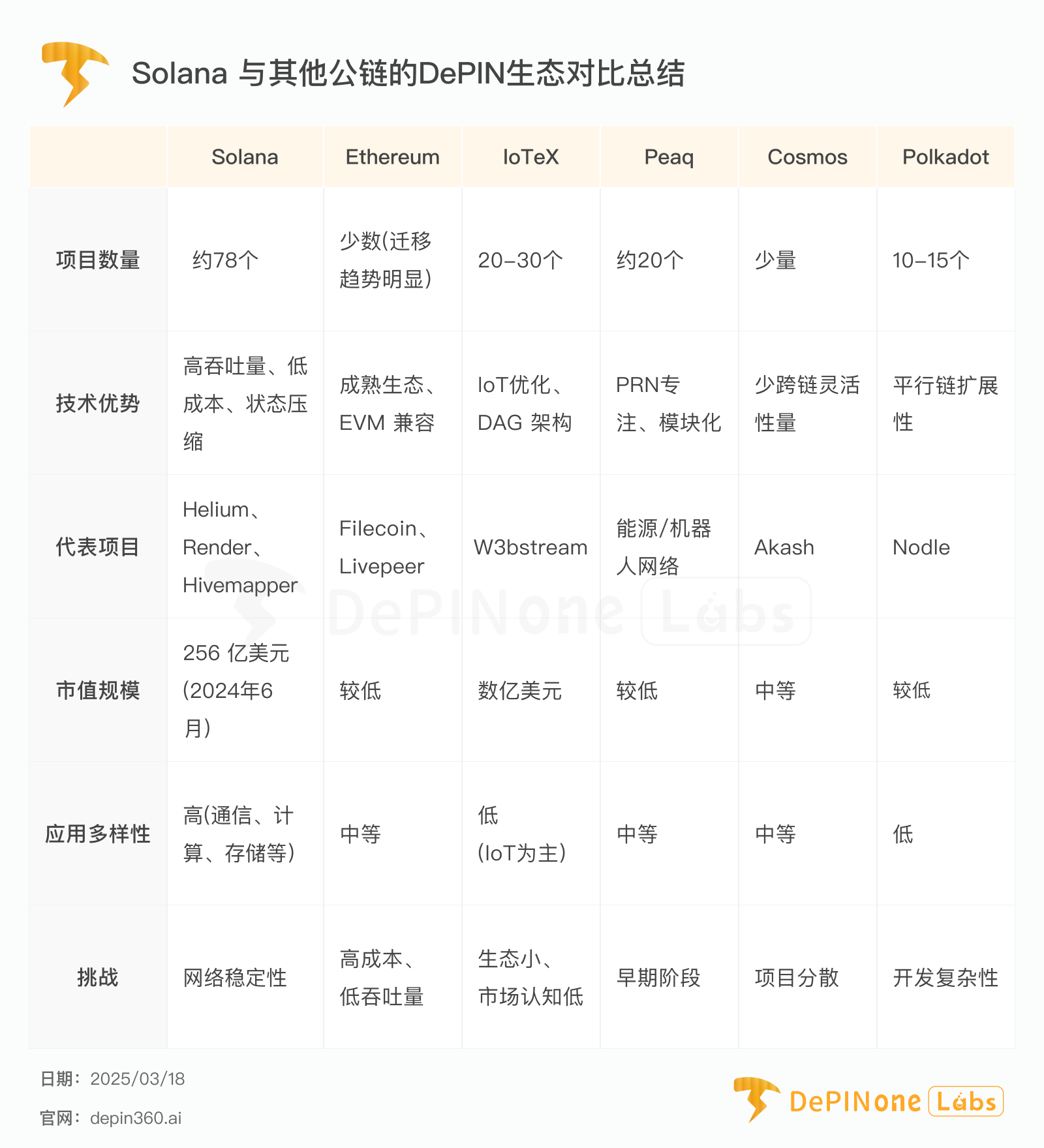
From the above table, we can see that Solana has obvious advantages over other public chains in the DePIN track:
-
In terms of technical performance and cost advantages, Solana has high performance and low cost. Compared with public chains such as Ethereum, Solana’s low gas fee is particularly friendly to DePIN projects that require frequent transactions (such as micropayment incentives);
-
Proof of History (PoH) and parallel processing capabilities enable it to handle large amounts of real-time data from the DePIN project (such as IoT device communication, map data upload), allowing the DePIN project to be as smooth and comfortable as a web2 project.
-
In the public chain ecosystem, the Solana Foundation actively promotes the development of the DePIN project through funding and hackathons (such as cooperation with Multicoin Capital). Recently, a special fund for Solana DePIN was established to help Solana breed more high-quality projects. The first project above, DoubleZero, is the most well-known one at present.
Therefore, we are optimistic that Solana is not a pure Memecoin public chain. It must not be just because of its MEME effect that it has come to this day, but because of its deep ecological foundation and technical evangelism, as well as its strong support for the community and projects. We are optimistic that the ecology of the next DePIN empire may be born on Solana.
3. Other important events in the DePIN track recently
1. On February 1, DePIN and AI full-chain compatible modular infrastructure IoTeX released its 2025 development roadmap, focusing on the DePIN + AI ecosystem:
IoTeX has launched QuickSilver, an open source framework that combines large language models (LLMs) with DePIN network data to create high-level AI applications, and plans to launch the QuickSilver testnet in the first quarter. Developers will be able to use QuickSilver to connect the existing DePIN world with the emerging AI world, creating a new wave of “perceptual AI applications.”
IoTeX will create an initial BTC-based DePIN + AI asset strategic reserve for IOTX holders. This reserve will serve as a “vault” for long-term high-quality tokens and assets to safeguard the interests of IOTX holders.
A comprehensive community empowerment plan, combined with a DAO-based governance model, allows the community to directly participate in the development of IoTeX.
2. On March 3, at the DePIN + AI R3al World Summit held during ETHDenver 2025, Blockchain Association Policy Director Salah and IoTeX Ecosystem Director Larry had a forward-looking dialogue on the regulatory framework of cryptocurrency and DePIN + AI, triggering in-depth thinking in the industry on technology integration and policy trends.
Salah emphasized: “Currently, US regulators are accelerating their exploration of how to incorporate innovative technologies such as DePIN that integrate the physical and digital worlds into the national strategic framework. The future regulatory framework must balance technological innovation and public interests, and the transparency of DePIN and the explainability of AI may become the key to solving regulatory problems.”
Larry shared IoTeX’s practical experience: “From compliance cooperation with Grayscale and Coinbase to serving as co-chair of the Blockchain Association DePIN Working Group, we have always focused on “verifiable physical data” and promoted the alignment of DePIN + AI with the needs of the real economy.”
3. On March 6, the Solana Foundation and the Solana Chinese community Solar will hold a DePIN Day event in Shenzhen, the hardware capital, on March 8.
Solana ecosystem’s emerging DePIN projects Cudis, Starpower, Geodnet, Roam, Aethir, Gradient and DeGlass attended and gave on-site presentations and sharing.
IV. Recent Industry Financing Events
1. On February 27, the Solana ecosystem DePIN project Shaga completed a US$4 million seed round of financing. This round of financing was led by IOSG Ventures, with participation from Everyrealm, Amber Group and several angel investors.
Shaga hopes to reshape the gaming industry – breaking through hardware limitations, bringing ultra-low latency, and aiming to make high-performance gaming within reach.
BlockBeats previously reported that on June 25, 2024, Shaga completed a $1 million angel round of financing, led by Arca, with participation from angel investors such as MARIN DIGITAL VENTURES, Skybridge20 Ventures, Aurory, Quotient Ventures, and Solana co-founder Anatoly Yakovenko and Helium founder Amir Haleem.
2. On February 25, the DePIN project Geodnet completed $8 million in token financing, led by Multicoin.
Geodnet provides financial incentives for startups to host physical infrastructure, and the project’s token (its incentive mechanism) has more than doubled in the past 12 months due to high demand for Geodnet’s services.
Last April, the GEODNET Foundation announced the completion of more than $2 million in strategic financing, with participation from CoinFund, Pantera Capital, VanEck and Santiago R. Santos. The additional funds raised will support the foundation in achieving its short-term goals, including decentralization and developer ease of use.
3. On February 5, DePIN gaming infrastructure platform Beamable completed a US$13.5 million Series A financing round led by Bitkraft Ventures.
The Beamable Network aims to change the way gaming backend infrastructure is built and operated.
4. DoubleZero Foundation announced that it had received $28 million in investment led by Dragonfly and Multicoin Capital.
Double Zero is a project based on the DePIN track, allowing anyone to contribute independent fiber optic links without permission, which is equivalent to laying an “information highway” for the Web3 world. The biggest highlight of the project is its hardware-driven attributes, directly targeting the infrastructure layer. DoubleZero’s goal is simple: to increase bandwidth and reduce latency for all high-performance blockchains.
Author :DePINone Labs
This article reflects the opinions of PANews’s columnist and does not represent the stance of PANews. PANews does not assume legal responsibility. The article and opinions do not constitute investment advice.
Image Source :
DePINone Labs
If there is any infringement, please contact the author to remove it.
